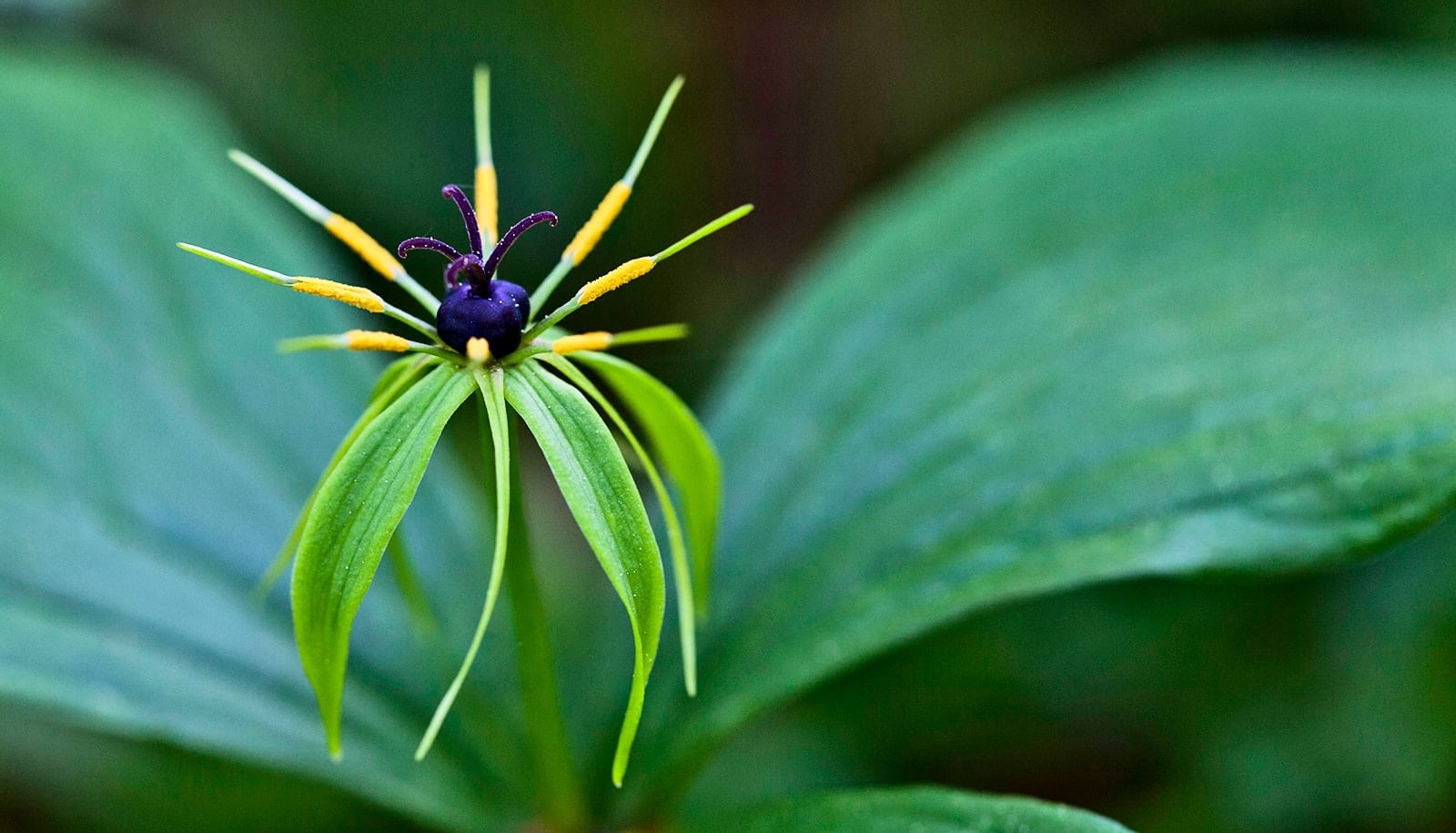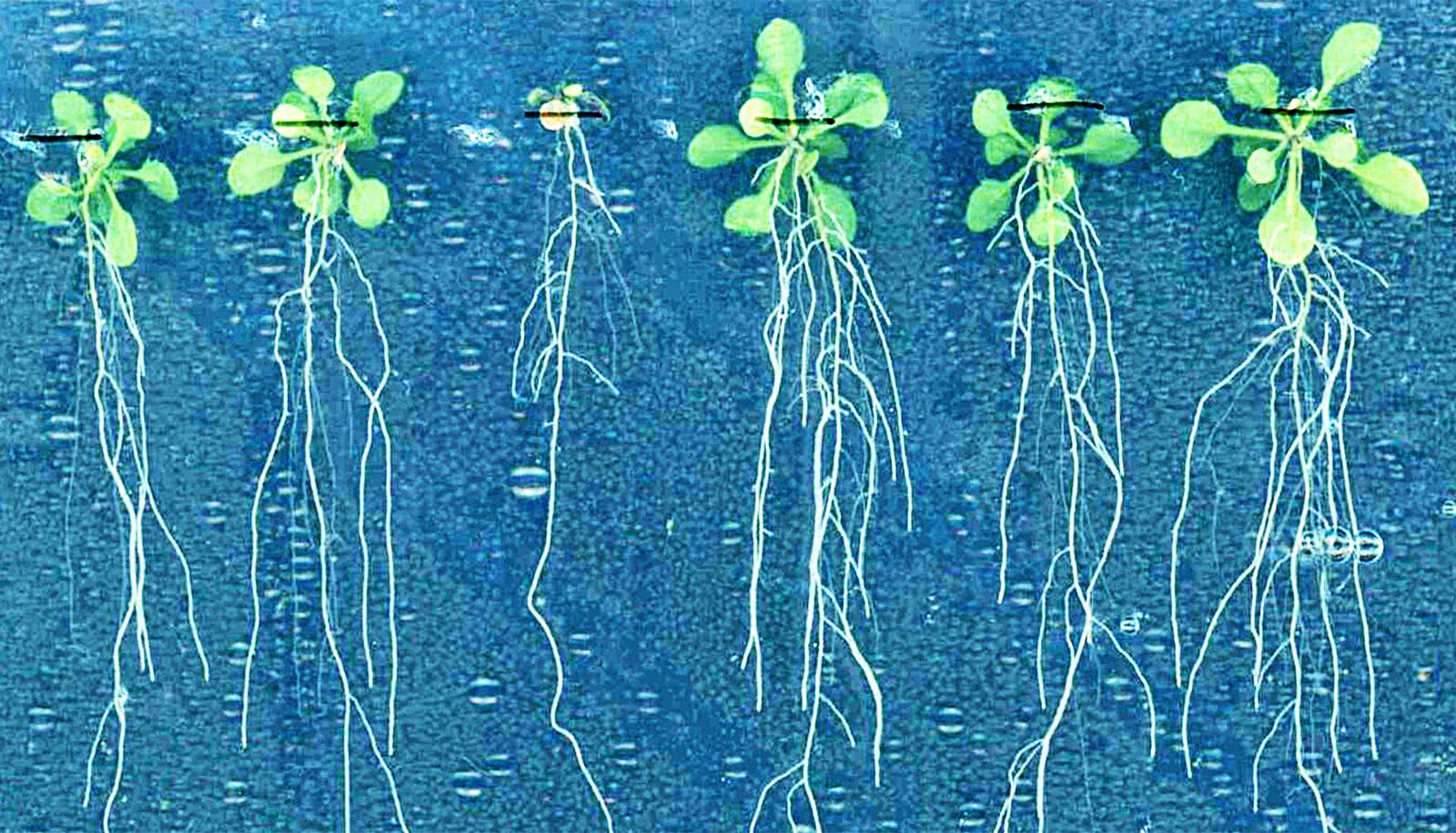
Up to 40% of all plants, including herb-paris, Paris quadrifolia , above, get some of their carbon from fungi in their roots. (Credit: Andrea Scheiber/Flickr )
Some plants gain carbon from their root fungi
Plants don't just get carbon from photosynthesis, new research suggests. Up to 40% may also get a portion from fungi in their roots.
Up to 40% of all plant species get a portion of their carbon from fungi living in their roots, a new study suggests.
The findings change our previous understanding that green plants only collect carbon from the air via photosynthesis, researchers say.
In biology classes around the world, students learn that green plants nourish themselves solely through photosynthesis , a process in which plants use solar energy to convert water and atmospheric carbon dioxide into oxygen and sugars.
The new study shows that, apparently, things aren’t quite so simple.
Some plants also collect vital carbon via fungi living in their roots, fungi that are part of a vast underground network of fungi—the Wood Wide Web. Plants use these fungi to collect a significant amount of their carbon from other plants while performing photosynthesis.
So far, researchers have demonstrated a transfer of carbon from fungi in herb-paris ( Paris-quadrifolia ) and white anemone. The findings open up the possibility that roughly 40% of all plant species have their own photosynthesis supplemented through carbon compounds transmitted via fungi to their roots .
They base this estimate on the fact that the type of fungal symbiosis (mycorrhiza) that herb-paris and white anemone have is very common and found in roughly 40% of all green plant species.
Several years ago, Hanne N. Rasmussen, senior researcher in the University of Copenhagen’s department of geosciences and natural resource management, came up with the idea that green plants with a certain type of fungal symbiosis gather carbon from their cohabitation with fungi. She shelved the idea due to a lack of experimental results to back it up.
“The long and established understanding is that green plants feed solely on their own photosynthesis,” she says.
She introduced the idea to a German colleague, whose interest was piqued. Together, they launched a study to reveal the origin of the carbon found in the leaves in a number of common forest floor herbs, including herb-paris and white anemone.
For many years the researcher has worked with orchids—and determined that orchid plants supplement photosynthesis with carbon from fungi via their roots.
The new study reveals that orchids are not as unique as once thought. However, while orchids are rare and have a special type of fungal symbiosis, the new findings apply to much more common and widespread plant species, such as white anemone, together with a nearly omnipresent type of mycorrhiza.
The findings, published in the journal New Phyotologist , reverse our conception of the interrelationship of plants in nature, the researchers say.
The research results are based on analyses of stable isotopes in collaboration with the laboratory for isotope biogeochemistry at the Bayreuth Center for Ecology and Environmental Research (BayCEER).
Source: University of Copenhagen
The post Some plants gain carbon from their root fungi appeared first on Futurity .
Share this article:
This article uses material from the Futurity article, and is licenced under a CC BY-SA 4.0 International License. Images, videos and audio are available under their respective licenses.
Related Articles:
Quantum trick from nature provides ‘roadmap’ to better solar tech
June 15, 2020 • futurityPlant ‘conductor genes’ guide growing root systems
Dec. 10, 2019 • futurityLinks/images:
- https://www.futurity.org/algae-photosynthesis-origin-1639282/
- https://www.futurity.org/plant-conductor-genes-roots-2228422/
- https://www.futurity.org/ectomycorrhizal-fungi-pine-forests-2271562-2/
- https://doi.org/10.1111/nph.16367
- https://www.science.ku.dk/english/press/news/2020/will-new-research-necessitate-a-rewrite-of-biology-texts-green-plants-collect-carbon-using-fungi/
- https://www.futurity.org/plants-photosynthesis-fungi-roots-2358982-2/
- https://www.futurity.org


